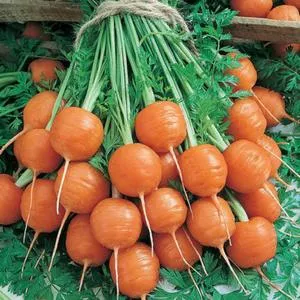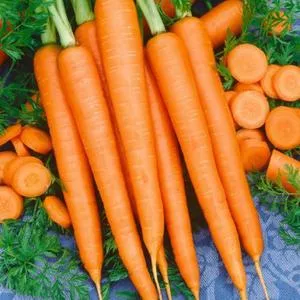Carrots
Daucus carota
Sow seeds as early as the ground can be worked, directly into rows that are twelve to eighteen inches apart. Make successive plantings until mid to late summer. The carrot fly can be a nuisance insect but planting the herb Sage nearby is said to help repel insects.
Carrots originated in what is now Afghanistan, Iran, and Pakistan and by about 1000 A.D., they were being grown from India to the Eastern Mediterranean. By the 1300s, purple and yellow carrots had spread as far as western Europe and China. White and orange carrots first appeared in Europe during the 1700s. Orange carrots quickly displaced all other colors and dominate the world to this day.
Carrots are an excellent source of beta-carotene (pro-vitamin A). Generally, the brighter the orange color, the higher the content of beta-carotene and vitamins. High-pigment varieties are also an excellent source of antioxidants thought to help prevent cancer.
Carrots originated in what is now Afghanistan, Iran, and Pakistan and by about 1000 A.D., they were being grown from India to the Eastern Mediterranean. By the 1300s, purple and yellow carrots had spread as far as western Europe and China. White and orange carrots first appeared in Europe during the 1700s. Orange carrots quickly displaced all other colors and dominate the world to this day.
Carrots are an excellent source of beta-carotene (pro-vitamin A). Generally, the brighter the orange color, the higher the content of beta-carotene and vitamins. High-pigment varieties are also an excellent source of antioxidants thought to help prevent cancer.
Each packet contains one gram, which is approximately 650 seeds.
Click on variety's picture or name below for more information and quantity pricing options (where available).
21 found





















